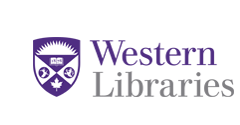
Communication Sciences and Disorders Publications
Research in the School of Communication Sciences and Disorders includes a wide range of topics in areas such as normal and disordered speech production and perception, language disorders, swallowing, hearing by normally hearing and hearing impaired listeners, and the causes and treatment of hearing loss.
Submissions from 2023
An evaluation of the CARL manikin for use in "patient-free" real ear measurement: consistency and comparison to normative data., Paula Folkeard, Muneeb Alam, Robert Koch, Parvaneh Abbasalipour, and Susan Scollie
Modified Multiple Stimulus With Hidden Reference and Anchors–Gabrielsson Total Impression Sound Quality Rating Comparisons for Speech in Quiet, Noise, and Reverberation, Mohamed Rahme, Paula Folkeard, Steve Beaulac, Susan Scollie, and Vijay Parsa
Development and initial evaluation of the Hearing Aid Attribute and Feature Importance Evaluation (HAFIE) questionnaire, Hasan Saleh, Paula Folkeard, Selina Liao, and Susan Scollie
Validity and reliability of integrated pressure level real-ear-to-coupler difference measurements, Matthew J. B. Urichuk, David Purcell, and Susan Scollie
Validation of an integrated pressure level measured earmold wideband real-ear-to-coupler difference measurement, Matthew Urichuk, David Purcell, Prudence Allen, and Susan Scollie
Submissions from 2022
A Scoping Review of Technology and Infrastructure Needs in the Delivery of Virtual Hearing Aid Services, Danielle DiFabio, Robin O'Hagan, and Danielle Glista
Virtual Hearing Aid Care: Clinical Practice Guideline v2.0, Danielle Glista, Robin O'Hagan, Danielle Leah DiFabio, Sheila Theresa Frances Moodie, Karen Munoz, Frances Richert, Ioan Curca, Christine Meston, David Pfingstgraef, Keiran Joseph, and Christine L. Brown
Machine learning approaches used to analyze auditory evoked responses from the human auditory brainstem: A systematic review., Hasitha Wimalarathna, Sangamanatha Ankmnal-Veeranna, Chris Allan, Sumit K Agrawal, Jagath Samarabandu, Hanif M Ladak, and Prudence Allen
Submissions from 2021
Assessment of cochlear electrophysiology in typically developing children and children with auditory processing disorder, P Allen, Sangamanatha Ankmnal Veeranna, and Chris Allan
Clinical consensus document for fitting non-surgical transcutaneous bone conduction hearing devices to children, Marlene Bagatto, Dave Gordey, Lynne Brewster, Christine Brown, Michael Comeau, Charlotte Douglas, Rana El-Naji, Sheila Fortier, Alex Gascon, Jessica Godovin, Colleen Ittner, Meredith Magathan Haluschak, Laurie Mauro, Kari Morgenstein, Joy Peterson, Susan Scollie, Michael Scott, and Annemarie Wollet
Compensation to Altered Auditory Feedback in Children With Developmental Language Disorder and Typical Development, Caitlin Coughler, Emily Michaela Hamel, Janis Oram Cardy, Lisa M.D. Archibald, and David W. Purcell
Reliability of Speech-Language Pathologists' Categorizations of Preschoolers' Communication Impairments in Practice, Barbara J. Cunningham and Janis Oram Cardy
Fit-to-Targets and Aided Speech Intelligibility Index Values for Hearing Aids Fitted to the DSL v5-Adult Prescription, Andre Dao, Paula Folkeard, Sandra Baker, John Pumford, and Susan Scollie
Adopting a Conceptual Validity Framework for Testing in Speech-Language Pathology, Olivia Daub, Barbara Jane Cunningham, Marlene P. Bagatto, Andrew M. Johnson, Elaine Y. Kwok, Rachael E. Smyth, and Janis Oram Cardy
Characteristics of Speech-Evoked Envelope Following Responses in Infancy, Vijayalakshmi Easwar, Susan Scollie, Michael Lasarev, Matthew Urichuk, Steven J. Aiken, and David W. Purcell
Detection, Speech Recognition, Loudness, and Preference Outcomes With a Direct Drive Hearing Aid: Effects of Bandwidth, Paula Folkeard, Maaike Van Eeckhoutte, Suzanne Levy, Drew Dundas, Parvaneh Abbasalipour, Danielle Glista, Sumit Agrawal, and Susan Scollie
Speech-evoked brain activity is more robust to competing speech when it is spoken by someone familiar, Emma Holmes and Ingrid S. Johnsrude
How Long Does It Take for a Voice to Become Familiar? Speech Intelligibility and Voice Recognition Are Differentially Sensitive to Voice Training, Emma Holmes, Grace To, and Ingrid S. Johnsrude
Investigating the Role of Inattention and/or Hyperactivity/impulsivity in Language and Social Functioning Using a Dimensional Approach, Kaitlyn M.A. Parks, Janis E.Oram Cardy, Tiffany G. Woynaroski, Claudia G. Sehl, and Ryan A. Stevenson
Evaluating the accuracy of step tracking and fall detection in the starkey livio artificial intelligence hearing aids: A pilot study, Mohamed Rahme, Paula Folkeard, and Susan Scollie
Closing the species gap: Translational approaches to studying sensory processing differences relevant for autism spectrum disorder, Kaela E. Scott, Samantha E. Schulz, Dorit Moehrle, Brian L. Allman, Janis Oram Cardy, Ryan A. Stevenson, and Susanne Schmid
Sound Quality Ratings of Amplified Speech and Music Using a Direct Drive Hearing Aid: Effects of Bandwidth, Jonathan Vaisberg, Paula Folkeard, Suzanne Levy, Drew Dundas, Sumit Agrawal, and Susan Scollie
Perceived Sound Quality Dimensions Influencing Frequency-Gain Shaping Preferences for Hearing Aid-Amplified Speech and Music, Jonathan M. Vaisberg, Steve Beaulac, Danielle Glista, Ewan A. Macpherson, and Susan D. Scollie
Comparison of machine learning models to classify Auditory Brainstem Responses recorded from children with Auditory Processing Disorder, Hasitha Wimalarathna, Sangamanatha Ankmnal-Veeranna, Chris Allan, Sumit K. Agrawal, Prudence Allen, Jagath Samarabandu, and Hanif M. Ladak
Submissions from 2020
Audiological considerations for managing mild bilateral or unilateral hearing loss in infants and young children, Marlene Bagatto

